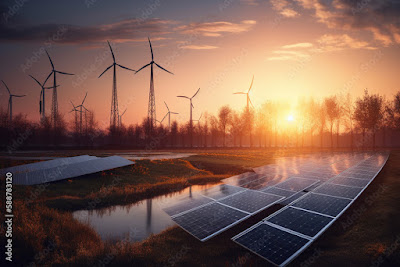Global energy landscape poised for transformation by the end of the decade, according to the International Energy Agency (IEA
The International Energy Agency (IEA) has unveiled its annual World Energy Outlook (WEO) for 2023, signaling a seismic shift in the global energy system. The report, considered an authoritative source of energy analysis and projections, highlights the remarkable ascent of clean energy technologies like solar, wind, electric cars, and heat pumps, redefining how the world powers industries, transportation, and homes.
IEA Executive Director, Fatih Birol, emphasized the inexorable rise of clean energy, stating, ". It’s not a question of 'if,' it’s just a matter of 'how soon' – and the sooner, the better for all of us. Governments, companies, and investors need to get behind clean energy transitions rather than hindering them."
Key insights from the WEO-2023:
Clean Energy Surge: Based on current policy settings, clean energy technologies are projected to surge by 2030. There will be nearly ten times as many electric cars on the world's roads, and solar power will outpace the entire electricity generation of the United States. Renewables are anticipated to constitute almost 50% of the global electricity mix, a significant rise from the current 30%.
Fossil Fuel Decline: The share of fossil fuels in global energy supply, stagnant at around 80% for decades, is predicted to diminish to 73% by 2030. Global energy-related CO2 emissions are expected to peak by 2025.
Chinese Energy Shift: China, the world's largest energy consumer, is poised for a significant transition. The nation's total energy demand is forecast to peak around the mid-2020s due to economic slowdown and structural changes. China's relentless growth in clean energy will contribute to a decline in fossil fuel demand and emissions.
Paris Agreement Challenge: Despite these positive trends, global demand for fossil fuels remains high and threatens the Paris Agreement's goal of limiting the rise in global temperatures to 1.5 °C. The WEO-2023 proposes a comprehensive five-pillar global strategy to bridge the gap (details outlined in the report).
The WEO-2023 also delves into the complex web of energy security challenges amid rising geopolitical tensions, particularly in the Middle East, fifty years after the oil crisis that led to the IEA's formation. This situation unfolds against the backdrop of lingering effects from the recent global energy crisis, introducing further uncertainty into the already unsettled global economy, marked by stubborn inflation and elevated borrowing costs.
The report underscores the critical need for immediate action to accelerate the clean energy transition and align with global climate objectives. It serves as a rallying cry for governments, businesses, and investors to embrace clean energy solutions and mitigate the impacts of climate change.


Comments
Post a Comment